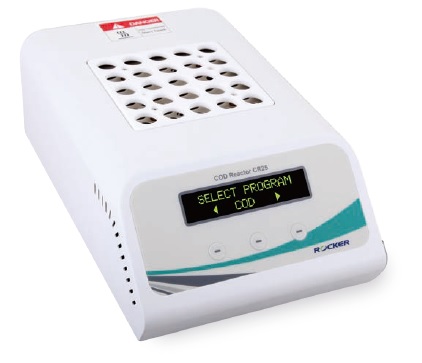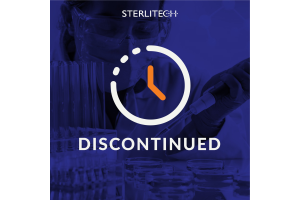SterliTECH Tip: What is Chemical Oxygen Demand (COD)?

What is Chemical Oxygen Demand?
Chemical oxygen demand (COD) is the amount of dissolved oxygen needed to oxidize organic matter present in water. COD testing is conducted to determine how much organic matter is present in a water sample and how much oxidation will occur. COD testing can also be used to determine the levels of inorganic chemicals present in a sample, [1] and is used to quantify pollution levels in water. A higher COD value indicates greater pollution levels in a water sample.
What is BOD and How Does it Differ from COD?
Biochemical or Biological Oxygen Demand (BOD), is the amount of dissolved oxygen required by aerobic microorganisms to break down organic matter present in water biologically. While COD and BOD can both be used to determine pollution levels in a water sample, COD is an indication of how much oxygen is required break down organic pollutants chemically via oxidation, whereas BOD is an indication as to how much oxygen is required by organisms to decompose organic pollutants biologically. While there is some correlation between the two measurements, measuring COD is faster and more accurate than measuring BOD. A COD test is therefore recommended in cases where the water has toxicity and/or organic matter that cannot be determined by biological oxygen demand.
Why is it Important to Measure Chemical Oxygen Demand (COD)?
In order to determine how much organic matter is present in water or wastewater effluent, and its potential environmental impact, it is essential to measure COD. Should the COD test indicate high levels of organic matter, remedial action may be required to ensure the effluent meets environmental health regulations before it is discharged into the environment.
COD Testing Equipment
The Rocker CD200 Chemical Oxygen Demand (COD) testing system can measure COD values within three ranges:
- 10-150 mg/L
- 100-1500 mg/L
- 1000-15000 mg/L
The CD200 COD detector requires no pre-heating, taking just 3 seconds to display the COD measurement after inserting a heated COD vial into the unit. With on-board memory and data storage, it has the capacity to store up to 100 records for future reference and comparison.
The CD200 COD detector is suitable for COD measurement over a wide range of applications, including:
- Testing industrial wastewater from factories
- Monitoring water quality of surface and groundwater systems
- Environmental monitoring of rivers, ponds, and lakes
Most importantly, the CD200 COD detector is simple to set up and easy to use. Just follow the three steps outlined below.
How to Perform a COD Test:
Step 1: Select reagent for sample
Choose COD reagent in a proper concentration range from compatible brands for water samples.
Step 2: Digestion of COD vials
Heat and digest COD vials with COD reactor.
Step 3: Detect and read COD concentration of samples
Choose the applied brand name and concentration of reagent on the COD detector, then measure COD value for water sample.
View the COD operating procedure here.
Sources
[1] https://www.corrosionpedia.com/definition/3207/chemical-oxygen-demand-cod
[3] https://www.sciencedirect.com/topics/earth-and-planetary-sciences/chemical-oxygen-demand
- Most Viewed Blog Articles (5)
- Company News (284)
- Emerging Technologies (64)
- Microbiology and Life Science News (93)
- Water and Fluid Separation News (97)
- Filtration Resources (93)
- Product News (19)

![Join Sterlitech at BIO 2024 [Booth #5558]: Exploring the Future of Biotechnology](https://www.sterlitech.com/media/blog/cache/300x200/magefan_blog/b4.jpeg)




